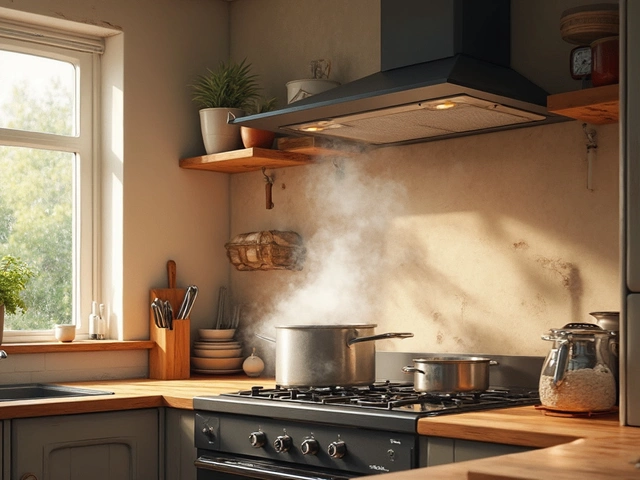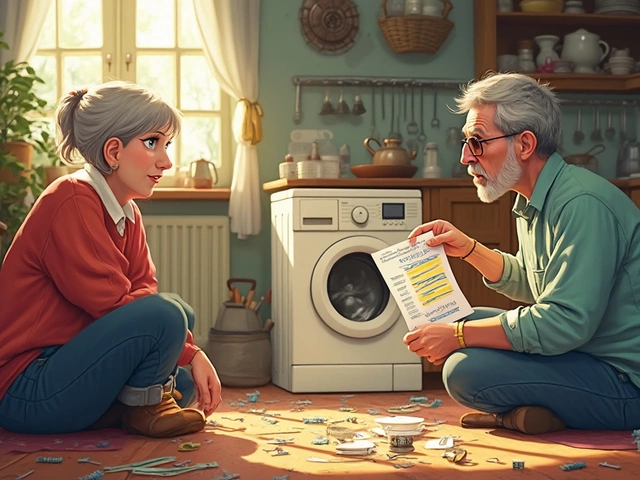It always seems to happen when you need it least—you’re looking forward to a steaming shower on a cold morning, but the water blasts out icy. Or maybe you’re halfway through a sink full of dishes when the warmth vanishes. There’s real frustration in that moment, the sudden realization that your trusty water heater has decided to take a day off. But before you start Googling for a new one or calling the nearest repair company, take a breath. There’s a lot you can do yourself, even if you don’t know your anode rod from your elbow. Most water heater mishaps have surprisingly simple fixes. And sometimes, a quick check can save you days of cold showers and a few hundred bucks.
Common Reasons Your Water Heater Isn’t Working
Water heaters look like big, mysterious tanks tucked out of sight, but honestly, there are only a few reasons why they act up. The most common villain? Power. Both electric and gas models rely on something as basic as electricity or gas flow. A tripped circuit breaker or pilot light gone out and you’re left wondering what went wrong. Double-checking the power switch or circuit breaker can be the quickest win—you might surprise yourself by flipping it back on and hearing the heater hum to life.
For gas-powered heaters, the pilot light is notorious for going out, especially in older models or after a sudden draft. Sometimes, it’s an issue with the thermocouple, that little safety gadget that cuts the gas if the pilot goes out. Newer water heaters often ditch the pilot for electronic ignition, but when those systems fail, it’s usually a power or component issue—not the end of the world, just a little fiddly. Sediment buildup is another biggie, especially if your water supply is on the hard side. It’s more common than you’d think: all that heated water lets minerals settle inside the tank, where they make odd noises and eventually choke heating elements. Over time, you’ll notice that your showers get cooler faster or the water takes ages to heat up at all.
Other sneaky problems? Malfunctioning thermostats, broken heating elements, or valves that have quietly failed and soaked the floor. Sometimes it’s just age. The typical water heater lasts 8-12 years (the exact number depends on your brand and luck). If yours is pushing double digits, some random quirks might just be a sign it’s ready to retire. Still, most issues come down to power, dirt, or minor wear parts like the thermostat and valves.
Check out this super simple table showing the most common water heater problems and what typically causes them:
| Problem | Likely Cause |
|---|---|
| No hot water at all | Power issue, failed thermostat, tripped breaker, pilot light out, gas valve off |
| Water is too hot | Thermostat set too high, broken thermostat |
| Not enough hot water | Sediment buildup, undersized heater, faulty heating element |
| Leaking water | Faulty valve, corroded tank, loose plumbing |
| Strange noises | Sediment buildup, heating element scaling |
DIY Troubleshooting: Steps to Bring Back the Hot Water
Ok, before you start pulling out tools or the user manual, safety first. If there’s a puddle near the heater, don’t touch anything until you’re sure it’s not a live wire situation. Once you’re clear, try these steps—the same ones pros use when they first show up for a job.
- Check the power source. For electric models, look at the breaker box; for gas, check if the pilot light is burning. If the breaker is tripped, reset it. With gas, often the pilot just needs relighting—that’s usually spelt out on a sticker right on the tank.
- Inspect the thermostat. Most heaters have an access panel held on by a couple of screws. Pop it off and look for the thermostat setting. If it’s cranked way down or up, adjust it to 120°F—that’s the safe, efficient sweet spot. Having it any higher invites burns and runs up your bill.
- Flush the tank. Sediment can silently steal your heat. Shut the power or gas off, attach a garden hose to the drain spout near the bottom, and drain a few gallons. You’ll likely see some cloudy water, maybe even chunks—yep, that’s the culprit. Flushing regularly can almost double the life of your heater. Big water heater brands like Rheem and Bradford White recommend flushing yearly, but even once every two years helps a ton.
- Look for leaks or drips. Sometimes the problem is right in your face—a leaky valve or drippy pipe. If the tank itself is leaking, it’s bad news; that means internal rust or damage. Smaller leaks from the plumbing fittings can usually be fixed with a wrench and some plumber’s tape.
- Test the pressure relief valve. This is the one with the little lever on top or the side. If it won’t reset or drips constantly after you flip it, it’s likely worn out. Easy swap, but make sure it matches your unit’s specs.
- Check the heating element (electric models). If you’re comfortable with a multimeter, test for continuity. If the element is bad, it’s about a half-hour DIY fix; just be sure the power is off at the breaker first.
Not sure you want to mess with the internals? Sometimes just writing down the noises you hear or the pattern of hot-cold water cycles can help a pro quickly figure out what’s up. Don’t feel bad if it’s above your confidence level—DIYing water heaters only makes sense when you’re sure you can get them back together safely.

Hot Water Problems: When to Repair and When It’s Time to Replace
You might be wondering, “How do I know if my water heater can be fixed, or if I’m just pouring money into an old clunker?” Here’s the reality: electric and gas heaters have a predictable lifespan. According to field data from the U.S. Department of Energy, traditional tank models last about 10-12 years on average, while tankless models can hang in there for 18-20 years with good maintenance. If yours is younger than that, especially under eight years old, most issues are repairable—the heating elements, thermostats, and valves are all swappable parts. Sometimes, a simple $20 part can bring your trusty heater back from the dead.
But, if your tank starts leaking from the body—not just a loose fitting—you’re dealing with a rust-out or split seam. That’s game over: tanks aren’t safely fixable from the inside, so your best bet is planning for a replacement. Another sign it might be time for an upgrade? Diminished flow and repeated repair calls. If you’re regularly running out of hot water even after maintenance, the heater is probably just undersized or filled with sediment beyond repair. It might seem obvious, but matching the right heater to your household size makes a huge difference. A family of four? A standard 40-gallon tank is just on the edge. Add teens or extra guests regularly, and a 50-gallon or a tankless unit can save a lot of headache and cost in the long run.
Don’t overlook hot water efficiency, either. A new Energy Star rated heater can save up to 15% off typical energy use. If your water heater is old and your energy bills have been creeping up, you might cut $40-$70 a year by swapping to a newer model. Some local utilities even offer rebates for high-efficiency heaters, so it’s not always as expensive as it seems up front.
Think of it this way: small leaks, little-to-no hot water, and odd noises—if the tank’s got some years left, these are “worth a fix” problems. Big leaks, rust flakes in the water, and non-stop repairs? Time to shop for a new one.
Here’s a quick table laying out "repair vs replace" for common scenarios:
| Situation | Repair or Replace? |
|---|---|
| Heating element or thermostat failure, tank under 10 yrs | Repair |
| Leaking tank from body, over 10 yrs | Replace |
| Repeated circuit breaker trips, no visible leaks, tank under 8 yrs | Repair |
| Significant rust in hot water, tank over 12 yrs | Replace |
| Low hot water, sediment filled tank, under 8 yrs | Flush/Repair |
Pro Tips: Maintenance That Prevents Next Time’s Disaster
Most people never touch their water heater until it’s already failed. But some basic maintenance every year or two goes a long way—not just for those stubborn lukewarm problems, but for the life of the whole system. The pros swear by regular draining and sediment flushing. If you flush just a few gallons every 6-12 months, you’ll probably never have to deal with the nerve-wracking knocking noise of sediment or the agony of suddenly cold showers.
The anode rod is another part nobody thinks about, but it quietly protects your tank from corrosion. This rod (usually magnesium or aluminum) attracts corrosive elements in the water, sacrificing itself to save the tank. If you swap it every 3-5 years, your tank might last a decade longer than the average. Sounds complicated, but it’s a simple “unscrew and replace” job on most models. The part itself costs less than a dinner out.
Test your pressure relief valve at least twice a year to make sure it isn’t stuck. If your heater sounds like a tea kettle or you see water pooled under it, check every valve connection for leaks. Catching a drip early can stop a flood later and keep bills in check. And don’t forget to keep the area around your heater clear. Nothing kills a heater faster than exposure to outside elements, dust bunnies, or paint cans crammed up against the burner in the garage. Airflow keeps gas heaters burning clean and prevents dangerous situations, too.
For homes in areas with very hard water, consider installing a water softener or filtration system. That single addition can lower maintenance needs and keep sediment at bay. Fact: cities like Dallas, Phoenix, and Las Vegas are notorious for mineral-heavy water—so tank problems show up faster there. If you’re in one of those places, you’ll want to step up your maintenance game.
- Flush the tank every 6-12 months
- Inspect and replace the anode rod every 3-5 years
- Test the pressure relief valve twice a year
- Check thermostat and wiring yearly for damage or burning
- Leave no clutter near the heater for safety and breathability
Those who set reminders and stick to them rarely walk into those cold shower surprises.

When to Call a Professional Plumber
There’s only so much you can do on your own before things get dicey. Electric water heaters can pack a 240-volt punch, and natural gas is nothing to fool around with if you smell rotten eggs or hear odd popping noises from the burner area. Any time plumbing leaks show up and you can’t stop them with a quick twist of a wrench, the problem might be hidden damage that only a certified pro can safely repair.
If you’ve flushed and reset everything and the water’s still icy? Time to call for help. Water pressure suddenly drops or your hot water smells like rotten eggs? That’s usually bacteria forming inside the tank; a plumber can disinfect while making sure no pipes are harmed. If you’re hearing heavy banging, have tripped breakers or fuses, or visible rust runs down the side of your tank, it’s best to shut things off and talk to someone with the right tools—sometimes what looks like a small part is actually a symptom of a much bigger issue.
Don’t gamble with gas leaks, spraying water, or weird scorch marks around electronics. Plumbers bring years of practice and fast-spotting know-how. And trust me, nobody’s ever regretted stopping a potential flood or crisis before it caused bigger damage. Plus, good plumbers can guide you to rebates, warranties, and energy-saving upgrades, not just repairs.
One more thing: install a leak detection sensor under your water heater if you’re away a lot. They’re cheap, wireless, and can alert you before a trickle becomes a disaster. Last year, nearly 70% of water heater failures in the U.S. led to home insurance claims for water damage. A $20 sensor may save thousands—much easier than restoring carpets or walls.
Hot water worries don’t have to rule your mornings. With a bit of knowledge, most people can fix or prevent the common problems. But never be shy about getting a pro when things get hairy—peace of mind (and a hot shower) is well worth it.







